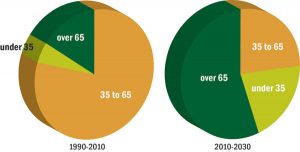
Authors of the new book Suburban Remix, by Jason Beske and David Dixon, describe the challenges we face as a result of sprawl growth patterns in effect since WWII. The book details examples of unique and successful sprawl repair in several communities through common themes and techniques.
“North America is in the midst of “suburban remix.” A perfect storm of challenges has broken apart a 70-year-old suburban growth model shaped around car-focused, relatively affluent, and dispersed development. But as this model falls apart, another far more resilient model is taking shape: walkable, dense, diverse, compact—and urban.
In a dramatic reversal, more people living in poverty now call suburbs home, while affluent households are relocating to cities. This has slowed tax-base growth, battering local budgets. Demographic and economic trends suggest that these dynamics will grow more disruptive over the next two decades.
[Several suburban case studies offer unique lessons, while utilizing common] process, policies, and placemaking. Each started with civic leadership—a local official, advocate, or organization that stepped forward and made the case for change. Each community launched a transformative planning process built around inclusive engagement that used education to build strong local support in places where terms like “dense” and “urban” had long been anathema. All market-driven, these initiatives also rely on innovative public/private partnerships to fund an “urban” infrastructure of streets, parks, and structured parking. They grow upward, not outward, creating a compact critical mass that supports the people (and disposable income) essential to bringing life to their new streets—without touching a single blade of grass on nearby residential lawns.”